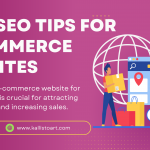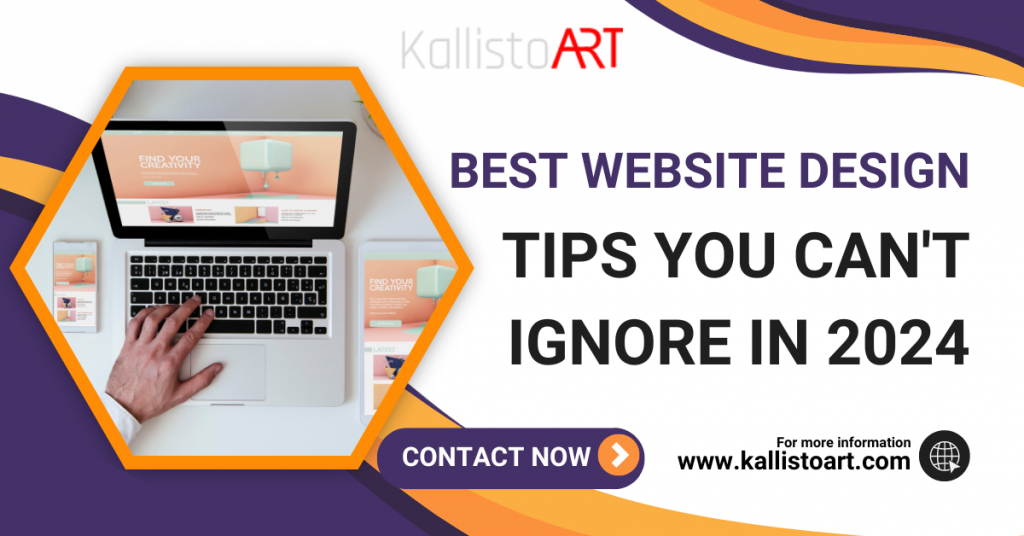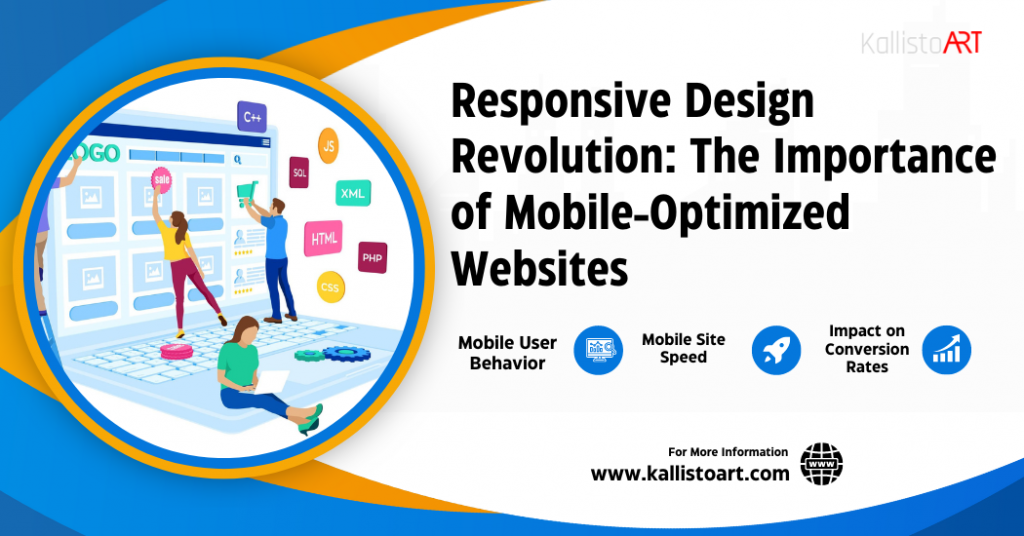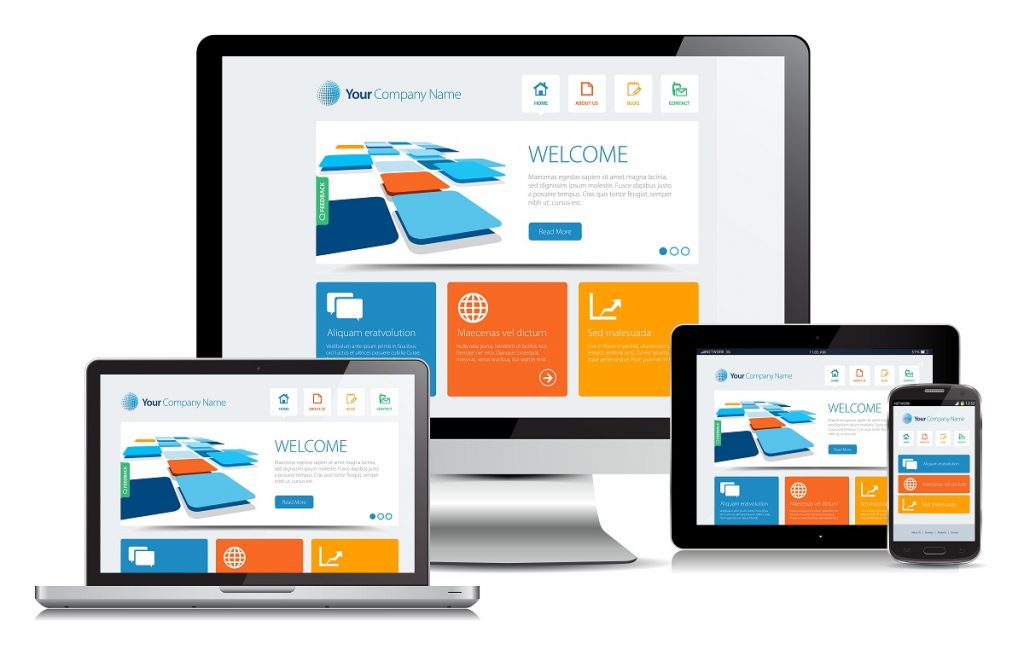
Crafting Digital Brilliance: Your Guide to Website Companies in Tampa
In the ever-evolving digital landscape of Tampa, businesses are recognizing the pivotal role of an effective website. Crafting digital brilliance goes beyond mere aesthetics; it involves a strategic combination of design, functionality, and user experience. This comprehensive guide will walk you through the key considerations when choosing a website company in Tampa, ensuring your online presence not only meets but exceeds expectations.
I. Introduction
A. Definition of Digital Brilliance
In the bustling digital era, achieving digital brilliance has become synonymous with crafting online experiences that captivate and resonate. It’s the fusion of innovative design, seamless functionality, and an unwavering commitment to user satisfaction. As businesses navigate the vast digital landscape, the term Website company Tampa becomes more than a combination of words—it encapsulates the essence of the dynamic industry thriving in the heart of Tampa.
B. Significance of an Effective Website
In the age of virtual storefronts, an effective website serves as the cornerstone of success for businesses of all sizes. This is especially true in Tampa, where the competitive digital market necessitates not just a presence but a powerful and compelling one. The phrase “Website company Tampa” embodies the specialized expertise and services offered by companies dedicated to elevating businesses through cutting-edge digital solutions.
II. The Tampa Digital Landscape
A. Overview of Tampa’s Digital Industry
Tampa’s digital industry stands at the intersection of innovation and opportunity. With a vibrant economy and a growing tech community, the city has become a hub for digital enterprises. This section will provide a detailed overview of the current state of Tampa’s digital landscape, exploring the various sectors contributing to its digital prowess.
(i) Tech Ecosystem:
Dive into the thriving technology ecosystem that Tampa boasts. Highlight key players, startups, and established tech companies that contribute to the city’s digital vibrancy.
(ii)Digital Infrastructure:
Explore the technological infrastructure supporting Tampa’s digital endeavors. Discuss the city’s connectivity, data centers, and other essential components that facilitate digital growth.
(iii) Emerging Technologies:
Shed light on the innovative technologies that are gaining traction in Tampa. This could include discussions on AI, IoT, blockchain, and other cutting-edge advancements shaping the city’s digital future.
B. Key Players in the Tampa Website Market
Tampa’s website development market is teeming with skilled professionals and agencies. In this subsection, we’ll delve into the key players shaping the local website development landscape.
(i) Prominent Agencies:
Identify and profile the leading website development agencies in Tampa. Highlight their strengths, specializations, and notable projects.
(ii) Freelancers and Independent Developers:
Discuss the role of freelancers and independent developers in Tampa’s website market. Explore how businesses can benefit from working with individual talents.
(iii) Collaborative Initiatives:
Showcase any collaborative initiatives within the digital community, such as hackathons, meetups, or forums where industry professionals converge to share insights and foster innovation.
III. Understanding Your Website Needs
In the dynamic world of online presence, it is imperative to begin your website development journey by gaining a profound understanding of your specific needs and objectives. This section delves into the foundational aspects that will shape the entire development process.
A. Assessing Business Goals
Before diving into the technicalities of website development, it’s crucial to align your digital strategy with your overarching business goals. This involves a comprehensive analysis of what your business aims to achieve, both in the short and long term. Questions to consider include:
(i) Strategic Objectives: Identify the key strategic objectives your business aims to fulfill through its online presence.
(ii) Target Market: Understand your target market and how your website can cater to the needs and preferences of your audience.
(iii) Competitive Edge: Evaluate how your website can contribute to your competitive advantage in the market.
(iv) Conversion Goals: Define the specific actions you want visitors to take on your website, whether it’s making a purchase, filling out a form, or signing up for a newsletter.
B. Target Audience Analysis
Crafting a successful website requires a deep understanding of your target audience. Knowing who your users are and what they expect from your online platform is pivotal for creating a user experience that resonates. This involves:
(i) User Personas: Develop detailed personas representing your ideal customers, considering demographics, interests, and behaviors.
(ii) User Journey Mapping: Chart the typical journey a user takes on your website, from landing on the homepage to completing desired actions.
(iii) User Needs and Pain Points: Identify the needs, preferences, and challenges of your target audience to tailor your website accordingly.
(iv) Accessibility: Ensure your website is accessible to a diverse audience, considering factors such as disabilities and various devices used for browsing.
By thoroughly assessing your business goals and understanding your target audience, you lay a solid foundation for the subsequent stages of website development. This knowledge serves as a compass, guiding the design, functionality, and content of your website towards meeting the specific needs of your business and audience.
IV. Features and Functionality
A. Essential Website Features
In this section, we explore the fundamental components that contribute to a well-rounded and functional website. These features are the building blocks that ensure your website meets the basic expectations of users and aligns with industry standards.
(i) Responsive Design: Ensuring that your website adapts seamlessly to various devices, providing an optimal user experience across desktops, tablets, and mobile phones.
(ii) Intuitive Navigation: Designing a user-friendly navigation system that allows visitors to easily find information and navigate through different sections of your website.
(iii) Contact Forms: Implementing interactive and user-friendly contact forms to facilitate easy communication between the website visitors and the business.
(iv) Security Measures: Incorporating essential security features to protect against cyber threats, ensuring the safety of both user data and the website itself.
(v) Fast Loading Speed: Optimizing the website’s performance to load quickly, reducing bounce rates and providing a positive user experience.
B. Advanced Functionality Options
Moving beyond the basics, this part of the guide explores advanced features that can elevate your website and make it stand out in the competitive digital landscape.
(i) E-commerce Integration: For businesses engaging in online transactions, integrating robust e-commerce functionality to facilitate secure and seamless online shopping experiences.
(ii) Content Management System (CMS): Implementing a CMS for easy content updates, empowering businesses to manage and modify website content without technical expertise.
(iii) Interactive Elements: Adding engaging elements such as sliders, interactive maps, or dynamic content to enhance user interaction and make the website more visually appealing.
(iv) Social Media Integration: Leveraging social media platforms by integrating sharing buttons and feeds, allowing users to easily connect and share content across various channels.
(v) Advanced Analytics: Implementing advanced tracking tools to gather insights into user behavior, enabling data-driven decision-making for continuous improvement.
V. Design Aesthetics
A. Importance of Visual Appeal
In the digital age, first impressions are often formed within seconds. The visual appeal of your website plays a pivotal role in capturing visitors’ attention and retaining their interest. This subheading will explore:
(i) User Engagement: How visually appealing design elements contribute to increased user engagement.
(ii) Brand Perception: The impact of aesthetics on shaping the perception of your brand. Consistency in design elements can help reinforce brand identity.
(iii) Navigation and Readability: The importance of an aesthetically pleasing yet functional design that enhances user navigation and readability.
B. Branding through Design
Your website serves as a digital ambassador for your brand. This subheading will elaborate on how design aesthetics can be strategically aligned with your brand:
(i) Visual Brand Identity: How to translate your brand’s visual identity into the website design, incorporating colors, fonts, and imagery that resonate with your brand.
(ii) Storytelling through Design: Using design elements to tell a cohesive and compelling story about your brand, creating an emotional connection with visitors.
(iii) Consistency Across Platforms: Ensuring that design aesthetics are consistent across various devices, from desktops to mobile devices, for a seamless brand experience.
VI. Content Strategy
In the realm of website development, the significance of content strategy cannot be overstated. It is the art and science of planning, developing, and managing content to meet specific business goals. An effective content strategy not only ensures that your website communicates the right message but also enhances user engagement and supports search engine optimization (SEO) efforts.
A. Content Planning and Creation
1. Audience-Centric Approach:
- Identify your target audience and tailor content to meet their needs and preferences.
- Understand the language, tone, and style that resonate with your audience.
2. Keyword Research:
- Conduct thorough keyword research to identify relevant terms and phrases in your industry.
- Incorporate these keywords seamlessly into your content for improved search engine visibility.
3. Content Calendar:
- Develop a content calendar outlining the topics, publishing schedule, and distribution channels.
- Maintain consistency in posting to keep your audience engaged.
4. Multimedia Integration:
- Explore the use of diverse content types, including text, images, infographics, and videos.
- Create a multimedia-rich experience to cater to different learning preferences.
5. Evergreen and Timely Content:
- Strike a balance between evergreen content that remains relevant over time and timely content that addresses current trends and events.
B. SEO Integration
1. Optimized Headings and Meta Descriptions:
- Craft compelling headings and meta descriptions that incorporate relevant keywords.
- Optimize these elements to entice both users and search engines.
2. Internal and External Linking:
- Strategically link to internal pages for better navigation and user experience.
- Incorporate authoritative external links to enhance your content’s credibility.
3. Content-Length and Readability:
- Find the right balance between comprehensive content and reader-friendly formatting.
- Break down complex information into digestible sections with clear headings.
4. Image Alt Text and Descriptions:
- Enhance accessibility and SEO by providing descriptive alt text for images.
- Utilize image descriptions to complement textual content.
5. Regular Content Audits:
- Conduct periodic content audits to assess performance and relevance.
- Update, repurpose, or remove content based on changing trends and audience needs.
VI. Mobile Responsiveness
A. Impact on User Experience
In the contemporary digital landscape, mobile devices have become ubiquitous tools for accessing the internet. Recognizing this trend is paramount when crafting a website, as user experience on mobile devices can significantly impact your audience’s perception of your brand.
Key Points:
(i) Device Diversity: Mobile responsiveness entails ensuring that your website functions seamlessly across a diverse range of mobile devices, including smartphones and tablets. This adaptability guarantees a consistent and positive user experience regardless of the device being used.
(ii) User Expectations: Modern users expect websites to be as accessible and functional on their mobile devices as they are on desktops. Failing to meet these expectations may result in frustrated users, high bounce rates, and a negative impact on your brand’s credibility.
(iii) Google’s Mobile-First Indexing: Search engines, particularly Google, prioritize mobile-friendly websites. Mobile-first indexing means that Google predominantly uses the mobile version of a site for indexing and ranking. A mobile-responsive design not only enhances user experience but also positively influences your website’s search engine ranking.
B. Best Practices for Mobile Optimization
Creating a mobile-responsive website goes beyond mere adaptation; it involves a strategic approach to design and functionality. Consider the following best practices:
1. Responsive Design: Utilize responsive web design techniques to create a flexible layout that adjusts based on the screen size. This ensures that your website looks and functions optimally on various devices.
2. Touch-Friendly Navigation: Design navigation elements that are easy to tap and interact with on touch screens. This includes appropriately sized buttons, clear calls-to-action, and intuitive gestures.
3. Optimized Content: Tailor your content for mobile consumption. Ensure that text is easily readable, images are appropriately sized, and multimedia elements are optimized for quick loading.
4. Fast Loading Times: Mobile users often have limited patience for slow-loading websites. Optimize your website’s performance to ensure swift loading times, reducing bounce rates and enhancing user satisfaction.
5. Cross-Browser Compatibility: Test your mobile-responsive design across various browsers to guarantee a consistent experience for users regardless of their browser preferences.
6. User Testing: Conduct thorough user testing on different mobile devices to identify any potential issues or areas for improvement. User feedback is invaluable for refining the mobile user experience.
By prioritizing mobile responsiveness, your website not only meets user expectations but also aligns with search engine requirements, contributing to a positive overall digital presence. Remember, in the digital era, catering to the mobile user is not just a trend but a necessity for sustained success.
VII. Tampa’s Website Development Trends
In the dynamic landscape of Tampa’s digital sphere, staying abreast of the latest website development trends is crucial for businesses aiming to remain competitive and relevant. This section delves into the current trends shaping the city’s website development scene.
A. Current Trends in Website Design
(i) Minimalistic Design: Clean and minimalist interfaces are gaining traction, focusing on simplicity and streamlined user experiences.
(ii) Immersive User Interaction: Websites are incorporating interactive elements, such as parallax scrolling and micro-animations, to enhance user engagement.
(iii) Dark Mode Integration: Responding to user preferences, many websites are adopting dark mode options for a visually appealing and comfortable browsing experience.
(iv) Inclusive Design: Ensuring websites are accessible to users with diverse abilities, emphasizing inclusivity in design choices.
(v) Bold Typography: Striking and large fonts are being used creatively to capture attention and convey brand personality.
B. Technological Advancements in Tampa’s Market
(i) Progressive Web Apps (PWAs): The adoption of PWAs is on the rise, offering users app-like experiences directly through web browsers.
(ii) Artificial Intelligence (AI) Integration: AI-powered features, like chatbots and personalized recommendations, are enhancing user interactions and automating processes.
(iii) Voice Search Optimization: With the increasing prevalence of voice-activated devices, websites are optimizing for voice search to enhance accessibility and user convenience.
(iv) Blockchain in Web Security: Leveraging blockchain technology to enhance the security of online transactions and user data.
(v) Mobile-First Development: Given the prominence of mobile usage, websites are prioritizing mobile responsiveness in their development strategies.
XI. Budgeting for Website Development
A. Cost Factors to Consider
When embarking on the journey of website development, understanding the various cost factors is crucial for effective budgeting. This section delves into the elements that contribute to the overall expense of creating a digital presence.
1. Domain and Hosting Fees:
- Explanation: The cost associated with acquiring a domain name (your website’s address) and hosting services.
- Importance: Securing a reliable domain and hosting is the foundation of your online presence.
2. Design and Development Costs:
- Explanation: Expenses related to the creation and coding of your website, including graphic design, user interface (UI), and user experience (UX) design.
- Importance: A visually appealing and functional design is key to engaging users and conveying your brand message effectively.
3. Content Creation and Copywriting:
- Explanation: The cost of developing high-quality, SEO-friendly content for your website, including text, images, and multimedia elements.
- Importance: Compelling content not only attracts visitors but also plays a crucial role in search engine rankings.
4. Third-Party Tools and Integrations:
- Explanation: Expenses tied to the integration of third-party tools, plugins, or software necessary for specific functionalities (e.g., payment gateways, social media integrations).
- Importance: Enhances the website’s capabilities and user experience by incorporating specialized features.
B. Balancing Quality and Affordability
Achieving a balance between the quality of your website and staying within budget is a delicate but necessary task. This section provides insights into making informed decisions that align with your financial constraints.
1. Prioritizing Features:
- Explanation: Identifying and prioritizing essential features over optional ones based on budget constraints.
- Importance: Ensures that core functionalities are developed first, with the possibility of adding enhancements in the future.
2. Comparing Development Quotes:
- Explanation: Obtaining quotes from multiple website development companies and comparing them to find the best balance of cost and quality.
- Importance: Enables you to make an informed decision by evaluating different offerings within your budget.
3. Open Communication with Developers:
- Explanation: Establishing transparent communication with your chosen development team to discuss budget constraints and explore alternative solutions.
- Importance: Fosters a collaborative relationship, allowing for creative problem-solving and efficient use of resources.
Consideration of Long-Term Costs:
- Explanation: Anticipating and planning for long-term costs, including maintenance, updates, and potential scalability.
- Importance: Prevents unexpected financial burdens and ensures the sustainability of your website over time.
(X) Conclusion – Crafting Digital Brilliance with KallistoArt: Your Trusted Website Company in Tampa
In the vibrant digital landscape of Tampa, your journey towards crafting digital brilliance begins with the right website company in Tampa. KallistoArt, a standout player in the Tampa market, offers more than just website development; they provide tailored solutions that align with your business goals and the unique dynamics of Tampa’s business environment. With a commitment to innovation, transparent communication, and a track record of client satisfaction, KallistoArt emerges as the go-to choice for businesses seeking a partner in their digital endeavors. Trust in their expertise to not only meet but exceed your expectations, as they guide you through the intricate process of website development, ensuring your online presence shines amidst the digital brilliance of Tampa.
(XI) Frequently Asked Questions:
Q1: How do I choose the right website company in Tampa for my business?
Ans: Selecting the right website company involves thorough research, considering client testimonials, and assessing their portfolio. KallistoArt, with its proven track record, offers tailored solutions for businesses in Tampa.
Q2: What sets KallistoArt apart from other website companies in Tampa?
Ans: KallistoArt stands out for its innovative design approach, commitment to client satisfaction, and a team of skilled professionals dedicated to crafting unique and effective digital solutions.
Q3: Can KallistoArt help with mobile optimization for businesses in Tampa?
Ans: Absolutely. KallistoArt recognizes the importance of mobile responsiveness in Tampa’s dynamic market. Their development strategies prioritize mobile optimization to ensure seamless user experiences across devices.

 Previous Post
Previous Post Next Post
Next Post


